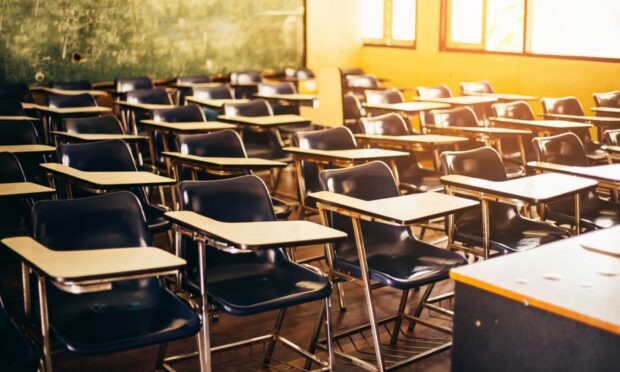Last month we brought you the statistics on overcrowded schools across the north and north-east, but many island schools are faced with a different problem.
More than half of the 78 schools in the island councils are at or below 50% capacity this year.
Mothballing is usually more of a threat than overcrowding to many rural island schools. There’s no hard-and-fast rule for when a school will get mothballed.
But for very small schools, some with only a handful of pupils, it’s a constant concern.
There are currently three mothballed schools in the islands, two in Shetland and one in the Western Isles.
Smaller populations make it hard for island councils to project school rolls the way mainland councils can. But locals say that boosting the population and reopening schools won’t be easy.
A note on the island school capacity tables
We’ve categorised schools as spare capacity (0-79%), low capacity (80-89%) and nearly full or over capacity (90% and above).
Keep in mind that school occupancy is just one factor that determines a school’s effective capacity. Building condition and suitability and individual student needs also play a part.
Also, note that the island local authorities track their school roll and projections differently. You can read more about the mainland local authorities in our previous report.
Now, use the search feature to find your school, or click on a column to sort by name or capacity.
Orkney school capacities
In Orkney, the council breaks down school capacities according to both primary and ELC provisions. ELC provisions are approaching overcrowding in four of 19 schools.
But unused space at the primary level offers extra room on campuses.
Until recently, two schools – North Ronaldsay and Flotta – had been mothballed. Over the last three years, the schools cost £50,518.64 and £44,948.44, respectively.
There are 10 schools at or below 50% capacity, out of a total of 25. Projections from the council suggest school rolls will look similar in five years’ time.
Shetland school capacities
There are currently two mothballed schools in Shetland – Skerries Primary and Papa Stour Primary Schools.
A spokeswoman for Shetland Islands Council said that the council aims for 80-85% capacity.
Recently, the council has had to work hard to recruit teachers to the area. Education leaders issued a plea for help filling vacancies, and some schools spent years searching for a new head teacher.
Western Isles school capacities
In the Western Isles, 10 of the council’s 25 schools are under 50% capacity.
Bernera Primary is currently mothballed and its students are attending Sgoil nan Loch. The council reviews the school’s condition every year. If more children come to the island in the future, it may be able to reopen.
Read more from the Schools & Family team
Pupil’s Jubilee jumper has a special royal connection
Highland Mum quits work to home-school her autistic sons, as new school has ‘no safe space’
‘Dunvegan waited a long time for this’ – New school and housing approved for Skye village

Conversation